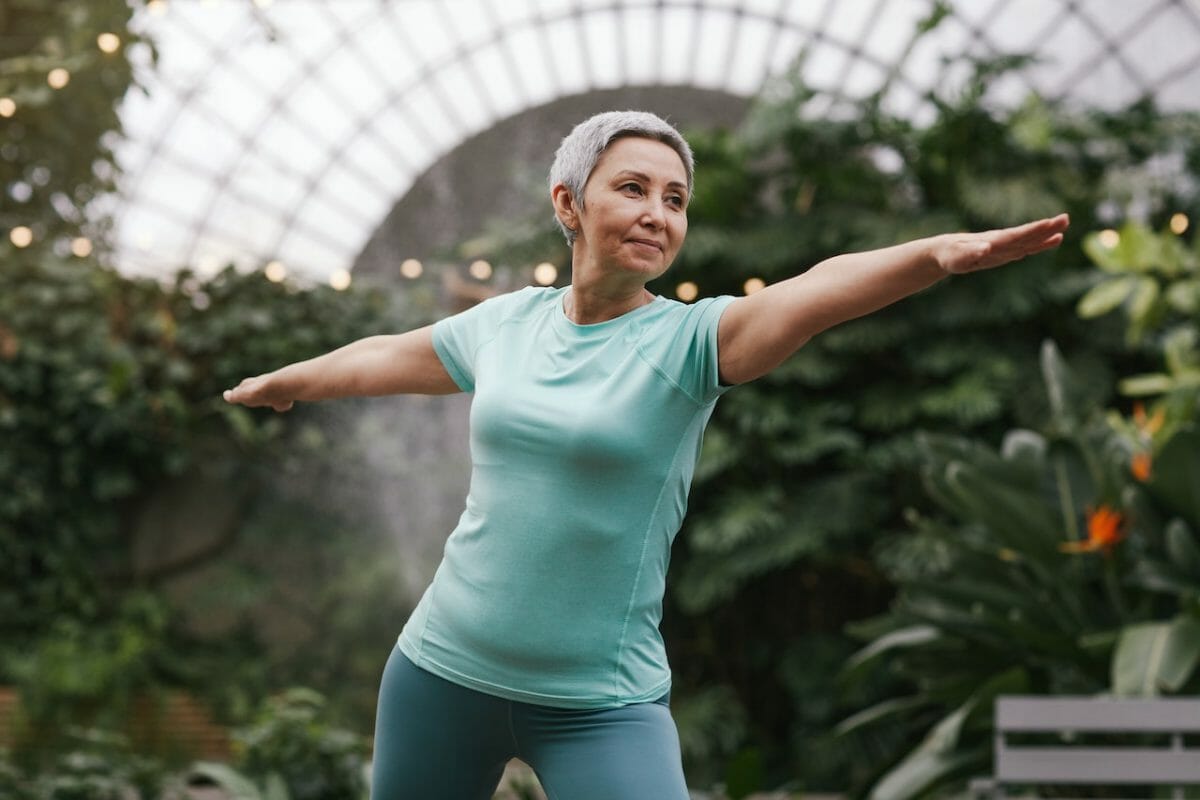Taking time for physical exercise is important for all of us. This is especially true when we officially become seniors.
The simple act of stretching for twenty minutes every day can go a long way toward helping seniors to stay limber and strong, and to help combat sore muscles and joints. Gentle guided exercise, like stretching, can also improve the recovery process following an injury or surgery. Positives like these can help seniors retain a healthy, independent, and active lifestyle for as long as possible!
In addition to improving strength, stretching can also help stave off some illnesses while improving agility, balance, and stamina. It doesn’t end there, though! Here’s a deeper dive into the power of daily stretches.
The Physical Benefits of Stretching for Seniors
- Your posture can be improved. In older age, the elasticity in our bodies can decrease while ligaments can tighten. This can result in poor posture and lower back pain. Gentle stretching can help to loosen the rigidity in these joints and muscles.
- You’ll feel more energetic. Stretching increases blood flow, which can boost energy levels. Increased blood flow also helps to transport essential nutrients throughout the body.
- Stretching reduces the potential for injury. Unfortunately, stiffness in muscles and joints is a common issue for seniors. Seventy percent of seniors report experiencing joint pain. Stretching can significantly improve the range of motion in joints, which can reduce the chance of injury, a trip, or a fall, as movement is more fluid, and the person feels more comfortable on their feet.
All told, stretching and gentle exercise are powerful tools for seniors, whether used as a preventative measure, following an injury that resulted in surgery, or even managing chronic pain.
Guided Stretching Can Help Following an Injury or Surgery
If you or a loved one is scheduled for surgery or experiencing chronic pain, guided stretching with a physiotherapist will undoubtedly prove valuable. A physiotherapist can play a vital role in the healing process by working with their client through a series of stretches and routines that can help restore mobility and function.
There are even specialist care workers who can come to your home to help with guided exercise and stretching — a beneficial service for days when joints are especially sore.
For example, Integracare Home Care employs compassionate, highly trained physiotherapists who can work with you or your loved one following an injury, or if they’re managing chronic pain, to improve strength, balance, posture, confidence, comfort, and their overall safety in the home.
The Mental Benefits of Stretching
In addition to helping with some physical issues, taking some time every day to factor in a gentle stretching routine has some mental health benefits, too.
As mentioned, stretching can reduce tightening in the muscles and pain. A reduction in ongoing pain can greatly improve mental health. Further, stretching can boost levels of serotonin. This can help to reduce stress and buoy our mood — which can go a long way to reducing depression and anxiety.
These pros are especially important for aging populations; it’s reported that one in four older adults experience a challenge with their mental health, like anxiety or depression. The number of seniors who experience a mental health issue is anticipated to double by 2030.
Gentle Stretches Seniors Can Try at Home
The importance and benefits of gentle stretching are evident. With these positives in mind, here are a few stretches that seniors can do from the comfort of their homes and even from a seated position if preferred.
- The knee-to-chest stretch: This move can help with lower body flexibility and the strengthening and conditioning of the hips and legs.
- The overhead stretch: This is an excellent move for loosening up the upper half of the body.
- The neck bob: This exercise helps release neck, shoulders, and chest tension.
Any stretch over time aims to see an improvement in movement and a reduction in pain. Although checking with a healthcare provider before commencing a new exercise regime is always recommended.
These are just a few quick examples of stretching exercises that seniors can try at home. For more information, why not connect with a local healthcare provider to see if they can provide some tips, guidance, and assistance for other types of gentle exercise that are beneficial for seniors? Do so as a preventative measure, as a soothing technique in response to chronic pain, or following a surgery.
